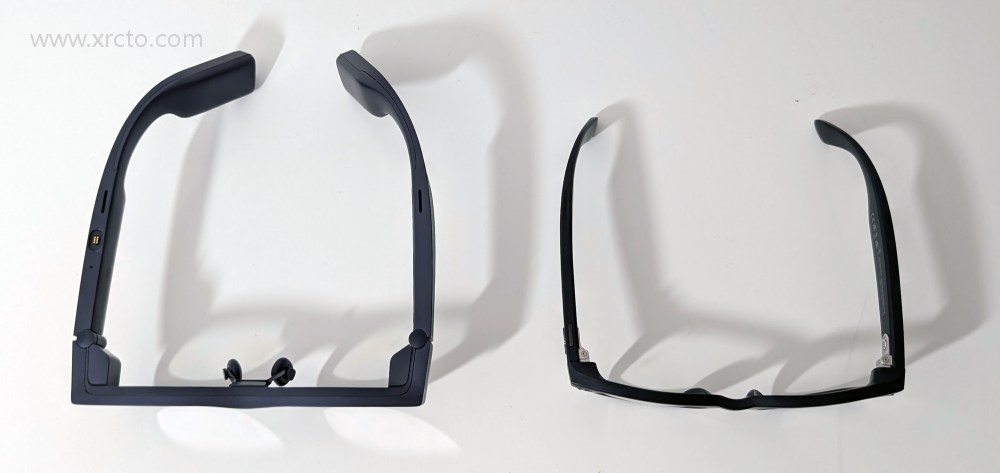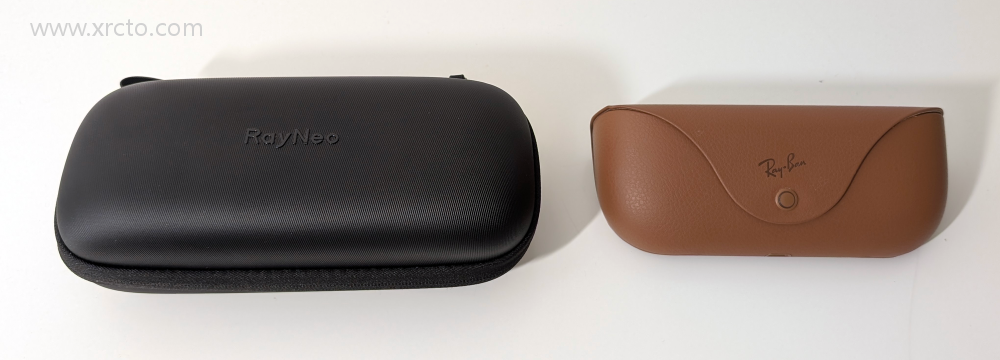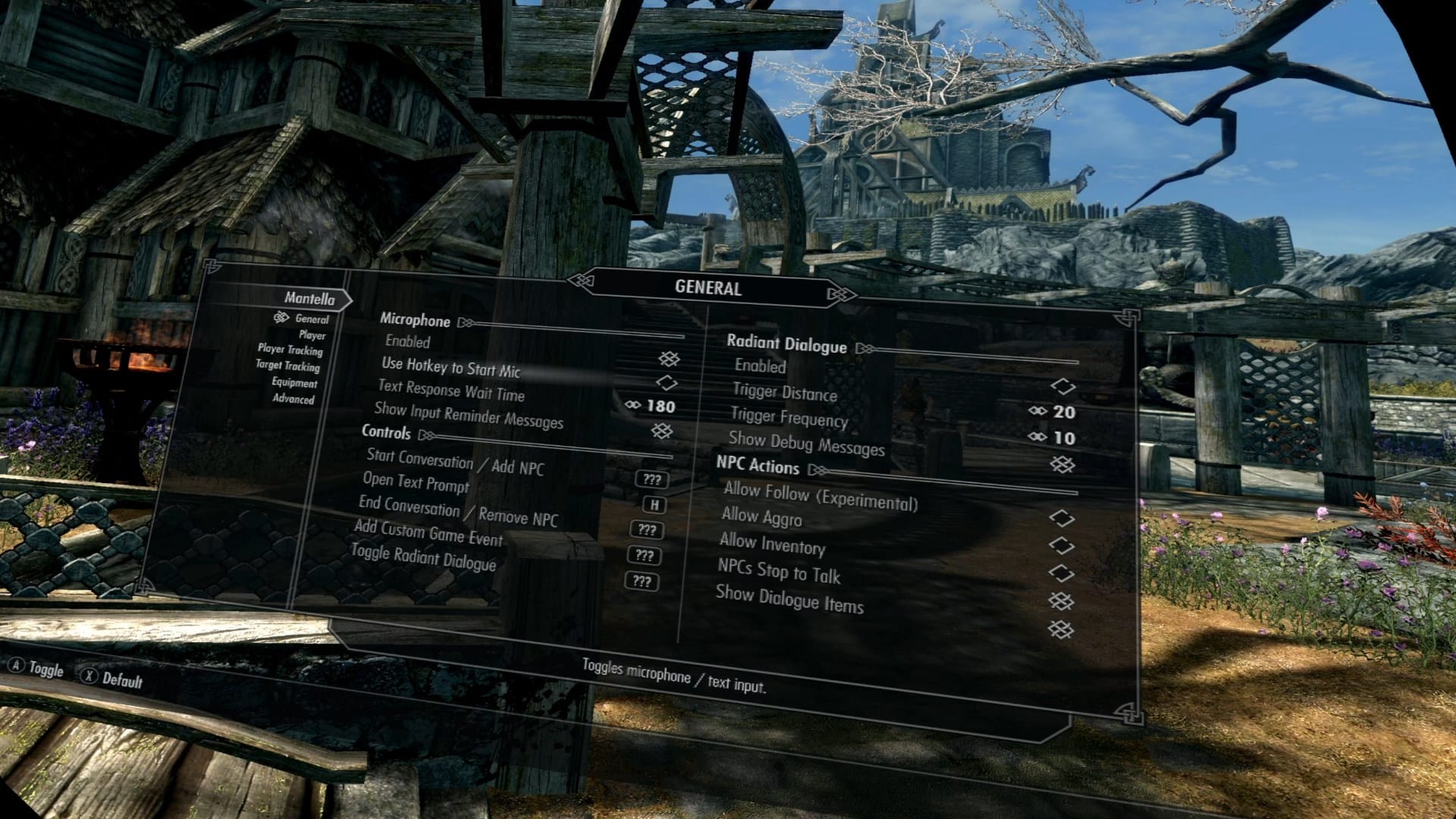RayNeo X2 is technically the first standalone AR 设备 in true glasses form factor, a note for the history books. But is it any good?
X2 started shipping to Indiegogo backers in May, and is currently sold at $850. The 设备 technically achieves two firsts: not only is it the first standalone AR glasses, meaning it doesn’t require a separate compute 设备 or battery, but it’s also the first AR 设备 with full-color microLED displays.
RayNeo X2 has a full Snapdragon XR2 chipset on board, the same used in Meta Quest 2, and the company claims the glasses are capable of the kind of out-of-home use cases people have been envisioning for AR glasses for years now, including outdoor navigation and realtime speech translation anchored to the person speaking. Are any of these claims true?
Design & Comfort
RayNeo X2 is in true glasses form factor. Unlike birdbath optics glasses such as Xreal and its clones, they don’t sit out from your face.

That said, they are noticeably larger and bulkier than regular glasses and Ray-Ban Meta smart glasses, pushing to the very limits of outdoor social acceptability and perhaps, for many people, just beyond.

They’re also heavier. I weighed my Ray-Ban Meta glasses at 50 grams, while RayNeo X2 weighs 120 grams.

But that’s not to say RayNeo X2 is uncomfortable. It has thick, soft padding at the end of its stems that act as a counterbalance, as well as soft nose padding. The arms are also made of a softer feeling plastic than Ray-Ban Meta glasses.

Overall, I actually find them just as comfortable, though I do notice the weight more. And of course this isn’t a fair comparison. The Ray-Ban Meta glasses require your phone for much of their functionality and lack any kind of display, while RayNeo X2 is fully standalone, bar the need for your phone’s Wi-Fi.
MicroLED + Waveguide Optics
What enables RayNeo X2 to achieve its true glasses form factor is the use of waveguides, the same optical approach Meta and Snap will likely use in their AR 设备s, as well as the use of microLED for its displays – a first in a consumer product anywhere near this price range.
MicroLED displays are very efficient and very bright, allowing RayNeo X2 to output 1000 nits despite its tiny battery, around 10 times as bright as 头显s like Quest 3 and Apple Vision Pro, and twice as bright as micro-OLED birdbath glasses like Xreal. In practice, this meant I could still see RayNeo X2’s displays outdoors on a sunny day.
But the microLED and waveguides optical stack also comes with notable downsides.
Firstly, the field of view is tiny, just 26 degrees. This cripples X2’s viability as an AR 设备, as I’ll expand on later, but it’s perfectly reasonable for a HUD (heads-up display).
Another downside on paper is that being the first microLED displays, they are very low resolution, at 640×480 per eye. In practice though the low field of view means the angular resolution here is similar to what you’d get in a Meta Quest 3 头显, sufficient for all the use cases RayNeo offers.
The biggest problem with RayNeo’s optics is how they affect your view of the world behind them. In theory, transparent AR optics offer you a perfect view of the real world, free of the low detail, graininess, and distortion of passthrough mixed reality 头显s. The problem is that in practice, X2’s waveguides scatter light coming from the other side too.
This appears as a large streak of fringed colors across your view when looking at a monitor, your phone, or the general direction of the sun. And if you’re using dark mode on that screen or phone, you’ll see the white text smeared across the black background and need to take X2 off to read it.
Software & Features
So I’ve described RayNeo X2’s form factor, comfort, display, and optics. But what can you actually do with it, and how well do these features work?
Non-Display Features
RayNeo X2 has a camera and speakers, so technically it can do everything Ray-Ban Meta glasses can. You can use it to take photos and videos or listen to music, podcasts, or audiobooks, and it has its own AI assistant.
The speaker quality is pretty much the same as Ray-Ban Meta glasses, and has the same advantage that you hear the real world undistorted since nothing is touching or covering your ears. It’s suitable for podcasts and audiobooks, and good enough for occasional music listening but far from the way you’d want to listen to music ideally.
The camera quality is a mixed bag. It’s landscape, so not ideal for social media posts and often can’t see objects you’re holding, defeating the purpose of a first-person capture solution. It’s also grainier than the camera on Ray-Ban Meta glasses and has worse exposure control, but also seems to have higher bitrate.
RayNeo also has its own AI assistant. But there’s no way to trigger it with a phrase like “Hey Meta”. Instead, you have to navigate to the app for it in the main menu and wait for it to launch, during which you can’t use other apps. It also seems to be designed to act more like a character than a neutral assistant, and uses the display to show both your voice input and the character’s outputs as text, as well as hearing it via audio. It’s a lot more frictionful and clunky than Meta’s solution.
HUD Features
What RayNeo X2 offers that Ray-Ban Meta glasses can’t are features that depend on having a display.
The most obvious of these is showing your phone’s notifications. While Meta AI can tell you that you got a new message from someone, RayNeo X2 can show you in a pop-up. You can choose which apps you want to show up, and you’ll hear a beep and see the preview in front of you. It’s of similar usefulness to a smartwatch, but without the need to look down. I do wish the HUD wasn’t directly in the center of your view though. Ideally, some day with future hardware, it would be to the side, above, below, or a corner (user-defined), so you could look at it if you want while still having an unobstructed view of straight ahead.
Another feature is navigation. This isn’t the AR navigation dream of floating arrows pointing you to your destination, though. Instead, you see turn-by-turn instructions, a video game style mini map, and a fixed arrow telling you which way to rotate. It’s an interesting solution but runs into the same issue as the notifications: it covers my view of the real world too much. This is why AR can be a lot more useful than a HUD; it can place objects and UI where you need them in space, not just in a fixed position in your view.
The final headline feature enabled by the display is translation. I was impressed by this more than any other software on the 设备. Select the language you want to translate to and from, then look directly at someone’s face while they speak that language, and you’ll see subtitles underneath them in your language. This is a true glimpse of a very different future. But the software is so laggy and clunky that it remains a novelty for now.
App Connectivity
The biggest issue I have with RayNeo X2’s software is how unreliable the connection is with the app. You need the app to view captured media, and to pass through internet when you’re not connected to Wi-Fi. But it often loses connection, and seems to have great difficulty in re-establishing it.
Clunky Controls
Accessing all these features, from camera capture to navigation to translation, requires scrolling through a menu system using a touchpad on the right side of the glasses. You tap to select, swipe to scroll, and double-tap to go back. And this just isn’t a good experience at all – it feels slow and frustrating.
RayNeo X2 also includes a ring you can use instead, but this is even more frustrating. The touchpad is tiny and unresponsive, and the ring is so thick and heavy that I wouldn’t want to leave it on my finger.
All of this highlights to me how input is just as much of a challenge for the prospect of AR glasses as display and compute, and I now understand Meta’s investment in its neural wristband project more than ever. Practical AR glasses will require a completely new approach to input; touchpads just aren’t up to the task.
Augmented Reality
While everything I’ve discussed so far takes place in a head-locked HUD, RayNeo X2 is technically capable of 6DoF positionally tracked augmented reality. The problem is, it’s terrible at it.
The tiny field of view means virtual objects are invisible unless you’re looking right at them, and thus hard to find and easy to completely lose. And the quality of the positional tracking is the worst I’ve seen in any 设备 I’ve used in the past decade.
Perhaps it’s the fact that a single RGB camera is used, or how low RayNeo needed to clock the XR2 chipset to get it running in glasses. Maybe it’s just the quality of RayNeo’s tracking software. Regardless of the cause, RayNeo X2 is an AR 设备 technically only. In reality, it’s not a practical way to use AR – it’s laughably bad at it.
It’s frustrating because it gives you a tiny glimpse of the magic of AR through transparent optics, bar the smearing issues I highlighted earlier, but not enough to make it something you’d really want to use more than once.
Battery Life & Charging
My favorite thing about the Ray-Ban Meta glasses is that they charge in an included case, like AirPods, which provides around 32 hours of battery life and itself charges via USB-C.
My least favorite thing about RayNeo X2 is that they do not. A case is included, sure, but it doesn’t have a battery in it, nor a charging port.

To charge RayNeo X2 you need to use the included proprietary magnetic cable, which has a USB-A end. And the case doesn’t even have a slot for this cable, so you have to awkwardly jam it in.
In terms of battery life, I found X2 lasts for 1-2 hours if constantly using the display and features, or around 5 hours if I’m using it just for audio and occasional camera capture.
A major problem is that they seem to drain significant power on standby. Unless you explicitly turn them off, RayNeo X2 will be out of battery if you just set them down. Hopefully this can be fixed in a future software update.
Conclusions
From a hardware perspective, RayNeo X2 is about as good as can be achieved with transparent optics in a standalone glasses form factor for under $1000 in 2024 and gives a tiny glimpse of the future of computing, though I wish its charging solution was more elegant.
But lackluster software and clunky controls severely limit its usefulness, and its augmented reality is laughably bad. Unless you’re an early adopter keen to try HUD glasses before companies like Meta and Google offer their own, I don’t recommend buying RayNeo X2.





